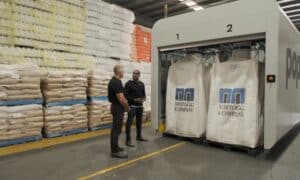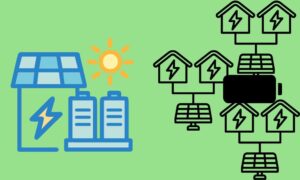In a recent Salisbury solar battery trial, homeowners in Salisbury, SA, have taken part in Australia’s largest suburban trial of solar power storage batteries.
The aim of the trial was to see if battery storage could save customers money, and protect them from blackouts. Most customers achieved the predicted savings of more than $600 a year. They benefited from improved self-consumption of their solar output. To add to this, the customers also highly valued the use of backup power if needed in times of blackouts.
SA Power Networks chose 100 customers at Salisbury to receive a heavily subsidised home storage battery. Battery systems can store electricity from solar panels or the grid. Homeowners then use them at night, or when there is a blackout.
SA Power Networks won a national award from Energy Networks Australia for innovation for the solar battery trial. As a result, it has important information for the energy industry on the benefits of new technologies.

Why a Salisbury solar battery trial?
John Bradley, CEO of the Energy Networks Association, says 40 per cent of South Australia’s electricity is consistently coming from wind and large-scale solar.
Bradley says storing renewable energy is still a huge challenge across the country. “This initiative means they are using battery storage at the customer premises. Instead of investing in more poles and wires. This is really the way of the future.”
Salisbury was a perfect place for the trial. Energy demand was rising as older houses in the area were being replaced with units. New arrivals with growing families were buying them.
Customers in the trial used a minimum of 4,000 kilowatt hours (kWh) of annual grid electricity. In other words, 2,500 KWh a year on solar panels. They were connected to one of the power lines chosen in the trial.
New residents, growing families: more energy
In the trial, smart battery management systems provided the best choice for customers in using power from their solar panels or stored in their battery. The trial also let SA Power Networks use that energy to manage network issues like peak demand.
Instead of increasing the capacity of the local poles and wire network supplying Salisbury, SA Power Networks chose another way. They looked at the benefits for customers of distributed energy generation and storage.
SA Power Networks worked closely with customers to test interest in installing batteries as a way of storing excess solar. Salisbury trial customers are still enjoying reduced solar bills and backup power. As a result, SA Power Networks has put off a network upgrade.
An important find of the trial is managing how batteries charge and discharge power. This stops unwanted effects on other customers and network voltages.

The SA context
South Australia has one of the highest concentrations of solar PV in the world. About 30 per cent of the state’s 760,000 residential customers own solar systems.
South Australian rooftop solar PV capacity is around 800 MW. This is compared with a state peak demand of around 3,000 MW. Energy generated was 548,000 MWh in 2015-16, or 5.4 per cent of the energy delivered to SA Power Networks’ customers.
Generous feed-in tariffs of 44 cents/kWh create a high demand for solar. These will end in 2028. The state government subsidies are no longer available. But there are reductions in production costs. Also, there are more rises in electricity pricing. These have all contributed to customers buying more solar in South Australia.
Generation vs demand
A key factor is that the generation profile of solar PV is not well matched to demand on the electricity distribution network. Mark Vincent, who headed up the SA Power Networks project, explains:
“During the South Australian summer, solar PV makes its major energy contribution between 9am and 6pm,” he says. “The residential demand at air-conditioned premises is usually highest between 3.30pm and 9pm.
“But on hot summer days, net peak demand on the network in residential areas occurs during the 6pm and 9pm period. Unfortunately, solar generation does little to support the network peak.”
However, as the trial shows, battery storage makes sure demand is met when solar panels stop generating at night.
80% of Salisbury solar battery trial customers satisfied
A customer survey after one year of the Salisbury solar battery trial showed 80 per cent were happy with the benefits of their trial system. And 85 per cent changed the way they use energy as a result of taking part in the trial.
“The project has demonstrated that, with appropriate controls, batteries can provide benefits to customers, networks and other market participants, and moreover that these different benefit streams are complementary, not mutually exclusive,” Mr Vincent says.
So the trail was a success, and goes to show homeowners can save money, and benefit from more efficient use of their solar output. They can also protect themselves from blackouts by using power in reserve.














































